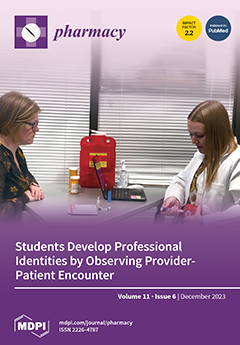This systematic review compared the efficacy and tolerance of oral antipsychotics (APDs) used in the treatment of schizophrenia following the PRISMA-P© statement (
n = 21). The primary outcomes of interest were clinical response measured with symptoms’ improvement, tolerance to side effects and
[...] Read more.
This systematic review compared the efficacy and tolerance of oral antipsychotics (APDs) used in the treatment of schizophrenia following the PRISMA-P© statement (
n = 21). The primary outcomes of interest were clinical response measured with symptoms’ improvement, tolerance to side effects and discontinuation reasons. There was better individual patients’ response to aripiprazole vs. ziprasidone and quetiapine ((CDSS
p = 0.04), BPRS
p = 0.02, YMRS
p = 0.001) and ziprasidone vs. quetiapine (CGI
p = 0.02, CDSS
p = 0.02). Aripiprazole was more tolerated than risperidone, ziprasidone and quetiapine (
p < 0.05). Quetiapine was more tolerated than aripiprazole, ziprasidone and risperidone (
p < 0.05). Ziprasidone was more tolerated than quetiapine haloperidol and olanzapine (
p < 0.05). Risperidone was more tolerated than olanzapine (
p = 0.03) and haloperidol was more tolerated than olanzapine and quetiapine (
p < 0.05). Olanzapine caused less discontinuation than quetiapine; quetiapine caused less discontinuation than ziprasidone, aripiprazole and haloperidol; ziprasidone caused less discontinuation than quetiapine, aripiprazole and haloperidol; aripiprazole caused less discontinuation than quetiapine, ziprasidone and olanzapine and olanzapine caused less discontinuation than ziprasidone and haloperidol (
p < 0.05). It was concluded that individual patient clinical response, tolerance to side effects and life-threatening side effects remain the most reliable basis for selecting and continuing the use of APD.
Full article





